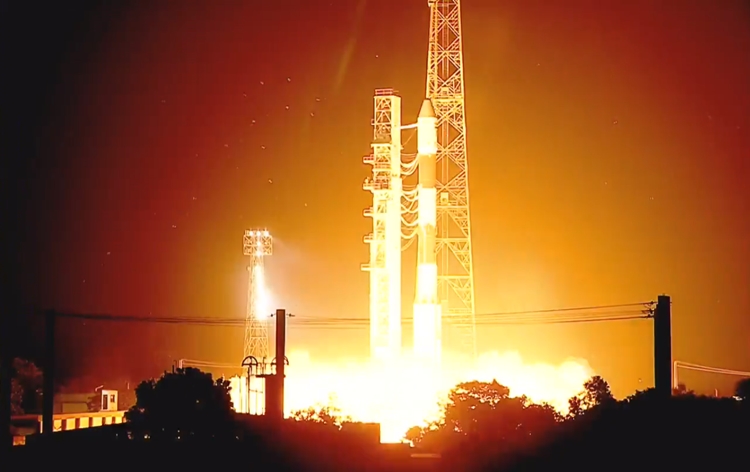Today early this morning The Indian Space Research Organisation, ISRO has successfully launched the Polar Satellite Launch Vehicle PSLV-C52 from the first launch pad of Satish Dhawan Space Centre in Sriharikota. The PSLV-C52 mission has also injected three satellites into the orbits.
The Chairman ISRO, C S Somnath has said that the launch was precise with all the four stages being perfect. He thanked the PSLV team for the successful launch.
PSLV C52 placed an EOS-04 radar imaging satellite weighing 1710 kgs into orbit. EOS-04 is designed to provide high-quality images under all weather conditions for applications such as agriculture, forestry and plantations, soil moisture and hydrology and flood mapping.
“After a flight of about 17 minutes 34 seconds three satellites namely EOS-04, INSPIREsat-1 and INST-2TD were injected successfully into a sun-synchronous polar orbit of 529 km. The orbit achieved for the satellites is very close to the intended orbits,” the space agency said in a statement.
After separation, two solar arrays of EOS-04 deployed automatically and Isro Telemetry Tracking and Command Network (ISTRAC) in Bengaluru assumed control. The satellite will be manoeuvred to its final position and begin providing data in a few days.
This was the country’s first mission this year, in fact, it was the first mission since the failure of the GSLV F10 mission in August 2021. The PSLV-C52/EOS-04 mission too has been delayed twice already due to the coronavirus pandemic. Initially planned for the third quarter of 2021, the launch got pushed to the fourth quarter and finally to early 2022.
This was the first mission of the space agency under the chairmanship of S Somanath, who took over as the chairperson Isro and secretary department of space in January. Keeping his remarks short, the chairperson thanked his teams and said that the satellite was a big asset for the country. S Somanath ended his less-than-a-minute long address with, “We will be back again with the next launch of PSLV very soon. Till then, goodbye.”
The 1,700kg EOS-04 is a radar imaging satellite capable of providing high-quality images under all weather conditions. It can be used to capture images for agriculture, forestry, flood mapping, soil moisture and hydrology. The satellite has a mission life of 10 years.
The spacecraft will also carry the INS-2DT technology demonstrator satellite, which has a thermal imaging camera and can help in the assessment of land and water surface temperatures apart from mapping vegetation.
The third InspireSat-1 satellite was developed by the Indian Institute of Space Science and Technology, University of Colorado, US, Singapore’s Nanyang Technological University, and National Central University in Taiwan. This satellite will use two instruments to study ionosphere dynamics and the Sun’s coronal heating process.
The coronavirus pandemic resulted in the space agency pushing not only its big-ticket missions but also routine launches. Isro has attempted only four missions, of which one failed, through 2020 and 2021. India’s first solar mission Aditya-L1, the third lunar mission with just the lander and rover Chandrayaan-3, and the first uncrewed flight under the Gaganyaan mission were all supposed to happen in 2020 but were pushed back initially to 2021 and then further after the second wave of the pandemic.
Isro is likely to target Chandrayaan-3 this year in August. The first development flight of the newly designed small satellite launch vehicle which was to happen in the second half of 2021 has also been deferred.
Source:IE







 Finance
Finance







